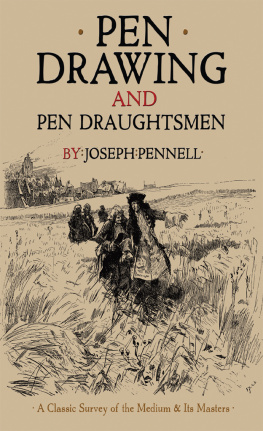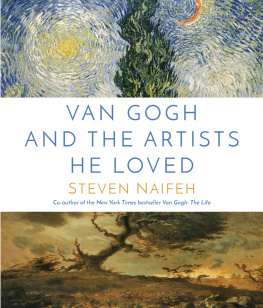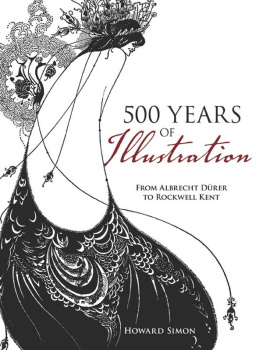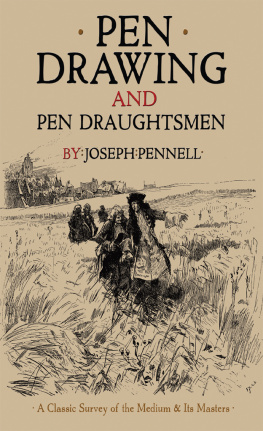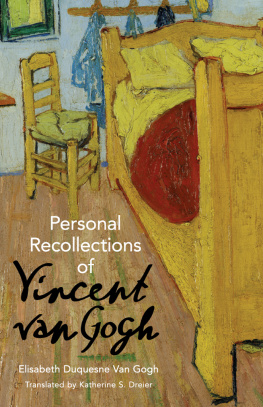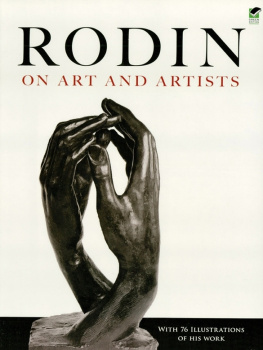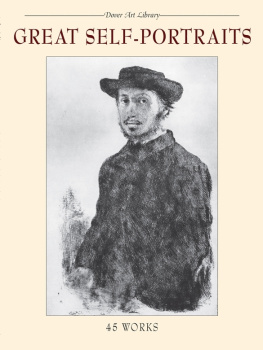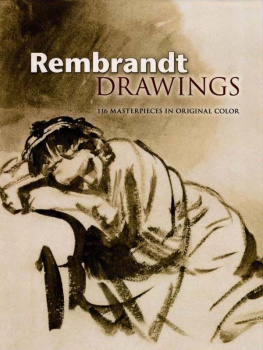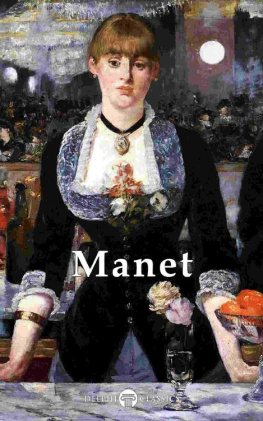OF PEN DRAWING IN THE PAST
CHAPTER I
O F pen drawing in the past I shall say little, for the reason that there is little to be said, that is, from my standpoint: the making of pen drawings for illustration and reproduction. No artist would study the old masters, with a very few exceptions, for the technical qualities of pen drawing for printing. As painters now look to Titian and Velasquez, Rembrandt and Franz Hals for the technique of oil painting, so illustrators in the future will look to some of the pen draughtsmen of yesterday as not only the early, but the great masters of the art. It is not necessary to do more than point out the scope and aims of pen drawing as practiced by the great artists of other days, in order to emphasize its far wider scope and broader aims among the men of our days. A knowledge of its technical immaturity in the past helps us to the appreciation of its development in the present.
It must be remembered, however, that if the pen drawing of the old masters was undeveloped in comparison with modern work, it was because, with them, there was no call for it as an art apart. It was quite perfect for their purpose. Since in engravings on wood and metal all the pen quality of a drawing was lost, when they wanted to reproduce their work they etched or engraved. What Hamerton says generally of pen drawings is really applicable only to the old men; theirs were sketches of projects and intentions. They are to be studied for their composition and arrangement, suggestion of light and shade, and rendering of the figure, of which I have no intention to speak, since in these matters pen drawing is subject to the same laws as any other form of art; but for technique these pen memoranda, which is what they are, as a rule, have little to teach the modern draughtsman.
That the old masters made great use of the pen is well known. One cannot visit any of the great galleries without seeing many of their pen drawings, which are interesting in relation to the pictures of which they were the germs, and as records of strong impressions and ideas vigorously and simply put down. And here let me insist again that, while one may make notes and sketches as they did, and study their marvelous facility and vigor in so sketching, such sketches are not, as many modern critics and painters consider them, pen drawings. This is proved at once by the very different methods used by these masters in their etchings, to which the pen drawings of today are equivalent. But their pen sketches, or rather memoranda, really were for them very much what instantaneous photographs are for their degenerate successors, the photographic painters, suggestions and notes of action and movementsuggestions which when adopted, and notes which when taken from the camera, nearly always result in the ruination of the artist, while the photographer struts abroad glorying in his greatness. By all means the old masters sketches should be studied. But it is the veriest affectation nowadays to imitate them, though hailed with approval and applause by the artlessly critical.
If the artists of today were not possessed of such curses as photography, they would probably excel all the masters in sketching or etchingalways excepting Rembrandt and Whistlerfor we do develop and advance. The modern artist has many aids and props which the old men knew nothing about, and these make the work of today much more, the artless think, accurate and true than that of old time. But because of his dependence on these props, the modern artist has lost much of his former ability to see and put down what he sees. This applies even to color. And if a man with the gifts of Titian were to appear today, he would surpass Titian, just as Corot surpasses all the old landscapists technically. Claude though is a greater artist and Claudes pen drawings are wonderfulbut mostly would not reproduce in line.
Michael Angelo, Da Vinci, and Raphael often made the first sketches for their paintings with pen and ink: sketches full of character, that have lately been made better known by numerous reproductions and numberless photographs. Botticellis delicate and refined illustrations for the Divina Commedia, though drawn with silver point, were gone over with pen and ink, while those signed with a B, at times attributed to Botticelli in the Hypnerotomachia, are the most perfect in the early books. Great as illustrators, too, were Drer and Holbein and their methods are by no means obsolete; the better they are known, the better for art.
Landscapes by Titian, with little villages or houses in the distance, have a delightful suggestion of picturesqueness; but it is curious to compare these with modern pen and ink landscapes by Rico, Vierge, or Lalanne. Titians, the honest critic must admit, if such exist, suffer when comparison of their technical points is made. But scarce any critics are honestand the few who are have mostly no courage, and copy the words that fall from the crooks. A drawing of a Turk by Gentile Bellini in the British Museum can, for beauty of modelling with a pen and delicacy of handling combined with simplicity, be advantageously studied by the pen draughtsmen of today. It shows what the old men might have done with a penbut they made drawings for their own sakefor arts sake, not for reproduction.
There are pen studies of horses and carriages by Velasquez, very simply and strongly suggested, and marvels by Rembrandt and Claude and above all Drer. But it is unnecessary to go through the list of all the masters whose drawings have been preserved. It is endless, and, differing as the drawings do in character, they are nearly all alike in being notes or records of facts; or if, as rarely happens, carried out, are, save in few more than the cases I have mentioned, valueless for study of technique. That is, to the student, who should learn that the greatest care and not the utmost carelessness should be his aim in drawing for reproduction. While one may rave over these early drawings, one should no more recommend their technique to the beginner than feed a baby with champagne. I wish it to be understood this book is not intended for dry, dreary cranks. There are ideas enough to be learned from the old masters drawings, and sometimes the best and strongest work of the artist is to be found in his pen drawings.
The pen draughtsman should study Holbeins Dance of Death, and his beautiful designs for metal work, many of the originals of which may be found in the British Museum and that at Basle; Albert Drers and Israel von Meckenens metal engravings; Rembrandts drawings and etchings; the lovely Renaissance decorative head and tail pieces; Claudes perfect landscapes in the Uffizi. Drer, having no perfect process by which to reproduce his designs, apparently put little delicacy of line into his wonderful drawings for the wood-cutter, yet a reference to the Apollo contradicts this statement, and delicacy is all that is lacking to make them in technique equal to the drawings of today. That he could draw delicately is shown by his prints, every one of which is worthy of reverent study. That he did not, only proves that he understood the limitations of wood-cutting. This want, however, added to a certain archaic feeling that pervades all his engraved work, makes it affectation for an artist today to model his style on that of Drerthough this wood-cut techniqueis perfect for rapid printing.
On the other hand, nothing could be nearer perfection for an artist of a northern country to study than Rembrandts and Whistlers etchings of out-of-door subjects, especially their little views of towns. Even Ruskin gives this advice in his Elements of Drawing, regarding Rembrandt; his etchings have so many of the same qualities as pen drawings that I feel certain, had he lived in our age, he would not have etched so much, but would have made innumerable pen drawings, for the same reason the best pen draughtsman of our land, Abbey, once gave me. Why, when he could have his drawings reproduced perfectly, should he use a nasty, dirty process, which is successful more by good luck than good management? That was E. A. Abbeys opinion. Luckily he died before the world came to an artless dry end, else he would have etched, for his drawings could not, or would not be reproduced todayit would cost too much. You can see from reproductions, how well Rembrandts simpler etchings, as well as Van Dycks, are rendered by line process blocks from clean wiped prints. Many of Rembrandts etchings come very well without any wiping. Whistlers last drawings were in pen and ink. Collectors now appreciate old etchings for their rarity, but when they were made they were sought for because of their perfect reproduction of the masters work. There were fancy prices attached to some of Rembrandts etchings when he made them but not to Meryons. They were sold for a few cents as are our worst illustrated magazines. We have scarce any good ones any longer.
Next page
